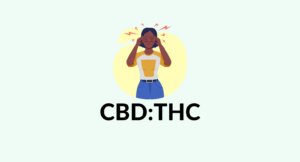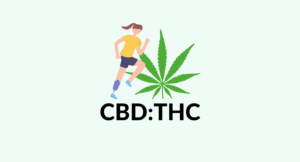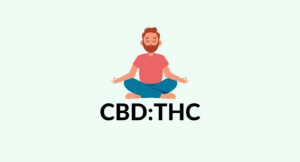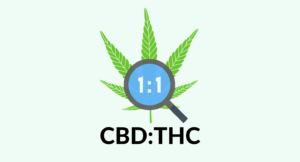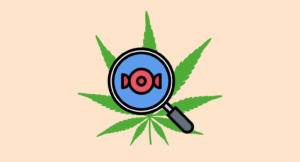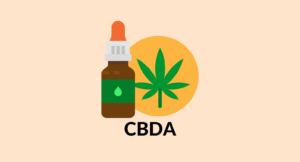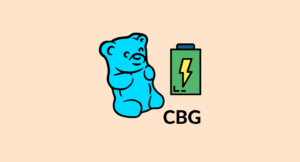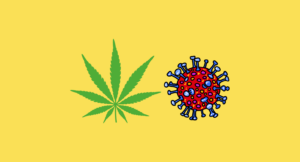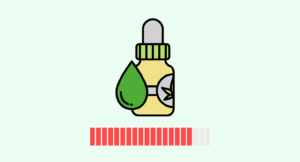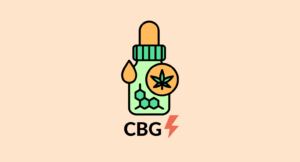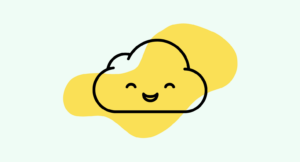
Evidence based
CBD Dosage Calculator: How Much CBD Should I Take?
The optimal dose of CBD depends on your weight and the potency of the oil you’re using.
Learn how to find the perfect dose using our CBD dosage calculator.
Everybody’s been talking about CBD oil and its long list of health benefits. You’ve shopped around and found a high-quality CBD oil to start yourself off with and you’re ready to get started.
So now what?
How much do I take? Can I take too much?
In this article, we’re going to talk about dosing CBD oil. We’ll cover how dosing can vary depending on factors like weight, age, the condition you’re treating, the potency of the oil you’re using, and more.
You’ll learn how to find the best dose for your body, and what to do if you experience side effects.
To make dosing as easy as possible, you can also use our CBD oil dosage calculator — which estimates your optimal dose based on your weight, desired strength, and potency of the CBD oil you’re using.
CBD Oil Dosage Calculator
What’s the Normal Dose of CBD?
The most common dose of CBD is 20 – 40 mg per dose. Some people take much less (as low as 1 mg), others take much higher (up to 100 mg).
Depending on the strength of the product you’re using, this could be anywhere from a few drops to several milliliters of oil. It could also involve anywhere from 1 – 5 capsules or gummies per dose.
The truth is that the optimal dose of CBD is different for everybody.
It’s common for two people with identical weights to respond very differently to the same dose of CBD. One person may find the ideal dose for them is 30 mg of CBD, while the other person responds better to just 10 mg.
The ideal dose of CBD for you depends on a variety of factors, including:
- Your size and weight
- The severity of the condition you’re treating
- Your tolerance to CBD
- Your individual body chemistry
- The potency of the CBD oil, capsules, gummies, or other CBD products you’re using
The best way to find the right dose for your body is to start with a very low dose (2 mg, for example) and increase by 2-5 mg per dose until you find what works best for you.
CBD Dosage For Anxiety
The effective dose of CBD oil for anxiety or chronic stress usually falls on the moderate to heavy range of the spectrum.
However, some people with anxiety disorders find they’re especially sensitive to CBD may only need a small dose.
When using CBD oil to manage anxiety levels, it’s best to start with a mild dose first to see how you respond. If you don’t see any improvement, move up to the moderate dosage next. Most people notice improvement with the moderate or heavy dosage according to their weight.
For best results, take CBD oil first thing in the morning, and repeat around lunchtime. Many people will take a mild “booster dose” about 30 to 60 minutes before engaging in activities that trigger their anxiety.
CBD Dosage For Pain
The dose of CBD oil for pain can vary significantly. For mild pain, such as low-grade arthritis, mild PMS pain, or low back pain — a mild or moderate dose of CBD oil will usually do the trick.
For more severe pain, nerve pain, or treatment-resistant multiple sclerosis or cancer pain — you’ll likely need to use a heavy dose of CBD oil.
Some people experience the painkilling benefits of CBD oil immediately, others need to take the oil for a few days or weeks before noticing any improvement.
The time it takes to notice improvement depends on the underlying condition that’s causing the pain.
Inflammatory pain, cancer pain, or pain from endometriosis can take a long time — while arthritis pain, digestive pain, muscle pain, and PMS pain usually improve within a few hours of taking CBD oil.
For arthritis or joint pain, you can get faster effects by using a CBD pain cream alongside your CBD oil.
CBD Dosage For Sleep
CBD oil has been shown to improve both the quality and duration of sleep — but studies have shown the effective dose of CBD oil for sleep is higher than other conditions. Aim for a heavy dose of CBD oil if the goal is to improve your sleep.
Low doses of CBD (less than 10 mg) can have a stimulating effect, while higher doses (20 mg or higher) are generally much more sedative. The more CBD oil you use, the stronger the sedative effect.
Certain types of CBD extracts also tend to have a stronger impact on sleep. For example, CBD oils that contain sleep-supportive terpenes such as linalool, bisabolol, lavandin, or myrcene have the strongest sedative action.
You can also find CBD oils that contain melatonin to make the oil even better for promoting sleep.
CBD Dosage For Depression
CBD oil is useful for managing symptoms of many mood disorders — including depression.
Finding the right dose of CBD oil for depression can take some trial and error. The underlying processes that cause depression don’t happen overnight, and they won’t disappear overnight either. It can take several weeks or months of steady CBD oil supplementation — along with other lifestyle modifications — before you can expect any real improvement.
It’s best to start with a mild or moderate dosage of CBD oil for a few weeks before graduating to the heavy dose once you understand how CBD affects your body individually.
Also see: What Does CBD Feel Like?
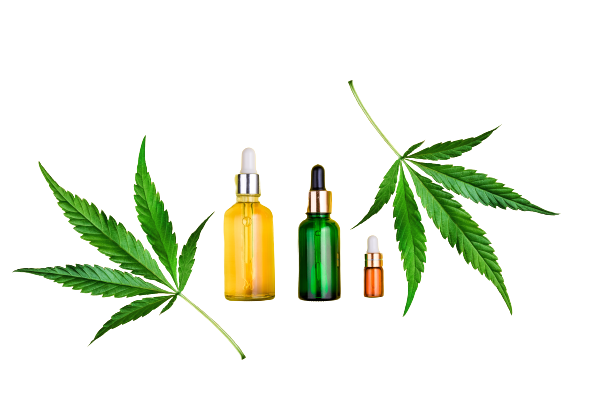
Calculating the Dose of CBD Based on Your Weight (How This Calculator Works)
While the dose of CBD is unique for everybody, there is a general rule of thumb that can be used to determine an estimated dose based on your weight and the strength of effects you’re looking for (low, medium, and high strength).
Our dosage calculator is based on the calculations listed below. These doses are estimates and should not be used to replace professional medical advice regarding dosage.
I recommend you start with the low-strength dose when using CBD for the first time and increase the dose slowly over time. When you find a dose that works, you’ve found the right dose for your body.
If you experience side effects, you’ve found your upper limit. Reduce the dose to the last amount that didn’t produce side effects.
Calculating the Dose of CBD By Weight & Strength:
- Low strength → 1 mg CBD per 10 pounds (2 mg per 10 kg)
- Medium strength → 3 mg CBD per 10 pounds (7 mg per 10 kg)
- High strength → 6 mg CBD per 10 pounds (13 mg per 10 kg)
It’s important to note that this measurement is in pure CBD, not CBD oil.
We’ll go over calculating how much CBD oil this dose works out to later on. Once you know how much CBD you should be using, you can find the equivalent amount of CBD oil depending on the potency of the oil you’re using.
CBD Dosage Chart by Weight & Strength (in mg)
The optimal dose of CBD depends on the combination of your weight and desired dosage.
A smaller, 90 lb woman is going to need a much smaller dose than a large 250 lb football player — for example. And someone looking for mild relief from stress or anxiety isn’t going to need a high dose like someone looking to treat persistent pain.
You can use this CBD dosage chart to visualize how the dose of CBD changes according to your body weight and desired strength of effects.
| Weight | Condition Severity | ||
 Mild Symptoms
Mild Symptoms
|
 Moderate Symptoms
Moderate Symptoms
|
 Heavy Symptoms
Heavy Symptoms
|
|
| 100 lbs (45 kg) | 10 mg |
30 mg |
60 mg |
| 125 lbs (57 kg) | 13 mg |
38 mg |
75 mg |
| 150 lbs (68 kg) | 15 mg |
45 mg |
90 mg |
| 175 lbs (79 kg) | 17 mg |
52 mg |
105 mg |
| 200 lbs (91 kg) | 20 mg |
60 mg |
120 mg |
| 225 lbs (102 kg) | 22 mg |
67 mg |
135 mg |
| 250 lbs (113 kg) | 25 mg |
75 mg |
150 mg |
What CBD Strength Should I Use?
The more CBD you take, the stronger the effects. Some conditions require relatively strong CBD doses to offer any benefit — others may only need a low strength to provide notable results.
Ask yourself, “what am I using CBD oil for?”
This is an important question to ask because it will guide you in the direction of the right dose to take.
Recommended Strength by Condition
- Anxiety → medium to high strength
- Arthritis → medium to high strength
- Cancer → high strength or pharmaceutical grade
- Chronic pain → medium to high strength
- Colitis & Inflammatory Bowel Disease → medium to high strength
- Epilepsy → high strength or pharmaceutical grade
- General health → low strength
- High blood pressure → medium to high strength
- Migraine headaches → low to high strength
- Muscle recovery → low to medium strength
- Nausea → low to medium strength
- Polycystic ovarian syndrome (PCOS) → low to medium strength
- Premenstrual Syndrome (PMS) → low to high strength
- Insomnia → medium to high strength
- Weight loss → low to medium strength
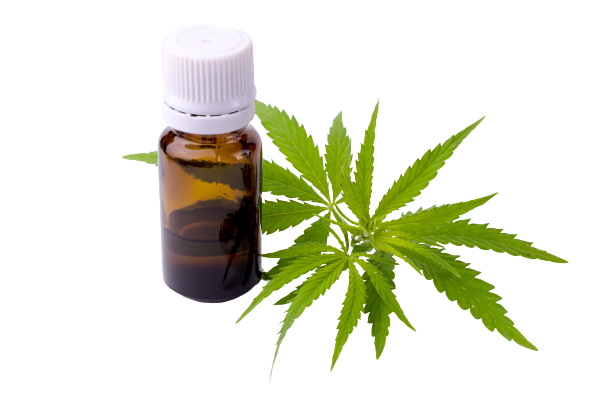
Dosing CBD: 4 Steps to Finding the Perfect Dose of CBD Oil
The easiest way to find your optimal dose of CBD is to use the CBD dose calculator above to identify your “low strength” dose for your weight. Alternatively, you can use the calculations listed above to find the dosages based on your weight manually.
From here, you can gradually increase the dose each day until you find relief from symptoms or experience side effects (usually fatigue or grogginess). If you experience side effects, reduce the next dose to the last amount that didn’t cause any negative effects.
Never start at a high strength if you‘ve never used CBD oil before.
If you want to get even more accurate with your dosing, follow the four steps below.
Step #1: Find Your Optimal CBD Dose
The first step is to find the ideal starting dose of CBD to use. This is based on your weight.
Here’s the General Rule of Thumb for CBD Dosing According to Weight & Strength:
| Weight Metric | Low Strength | Medium Strength | High Strength |
| Imperial (pounds) | 1 mg every 10 lbs (0.1 mg/lb) |
3 mg every 10 lbs (0.3 mg/lb) |
6 mg every 10 lbs (0.6 mg/lb) |
| Metric (kilograms) | 2 mg every 10 kg (0.2 mg/kg) |
7 mg every 10 kg (0.7 mg/kg) |
13 mg every 10 kg (1.3 mg/kg) |
How To Calculate Dose From Your Weight
[YOUR WEIGHT IN POUNDS] x [DESIRED STRENGTH (0.1, 0.3, or 0.6 mg)]= [YOUR DOSE IN MG CBD]
If you prefer metric, the formula changes only slightly:
[YOUR WEIGHT IN KG] x [DESIRED STRENGTH (0.2, 0.7, 1.3 mg)] = [YOUR DOSE IN MG CBD]
Here’s an example of this in practice:
Let’s say you’re a 170-pound male, and you’re looking for a medium-strength dose.
All you need to do is multiply your total weight (170 pounds) by the desired dose equivalent (0.3 mg per pound for medium strength).
[170] x [0.3 mg] = 51 mg CBD
So a good starting dose for you would be about 51 mg CBD per day in this case.
How much CBD oil is this? Next, you need to figure out how much CBD oil you’ll need to achieve this dose. You can measure this in drops or milliliters of oil.
Step #2: Determine the Potency of Your CBD Oil
The potency of the oil you’re using has a direct impact on the amount you’ll need to reach the optimal dosage.
For example, a high-strength CBD oil containing 1500 mg of CBD per ounce will require ten times less oil to reach a given dose of CBD than a low-potency oil with just 150 mg per ounce.
You’ll need to know how much CBD is provided in every milliliter of oil.
Sometimes the manufacturers will make this super easy for you and tell you the concentration of CBD per mL of oil directly on the bottle. Other times, this information isn’t provided, but the formula to find the concentration of an oil is very simple to do yourself.
Here’s What You Need to Take Into Account:
- Bottle size (in mL)
- Amount of CBD listed on the bottle (300 mg, 600 mg, 1000 mg, etc.)
Use This Formula to Calculate Potency:
[CBD IN MG] ÷ [BOTTLE SIZE IN ML] = [CBD IN MG/ML]
Let’s use an example.
Royal CBD makes a hemp oil that advertises 600 mg per bottle. The bottle size is 1 ounce (30 mL).
Let’s put this into our formula:
[600 MG] ÷ [30 ML] = [20 MG/ML CBD].
Our Answer: 20 mg CBD for every 1 mL of liquid.
Now that you know how potent the oil is, you can determine how much you need to get a specific dose.
For example, if you want a dose of 20 mg CBD, take 1 milliliter of oil — which conveniently works out to one full dropper. If you want 10 mg, take half a dropper. For 30 mg, take one and a half droppers, and so on.
Reference Chart for CBD Oil Potencies:
| Bottle Size | 300 mg CBD Oil | 600 mg CBD Oil | 1000 mg CBD Oil | 1500 mg CBD Oil |
| 15 mL | 20 mg/mL | 40 mg/mL | 66 mg/mL | 100 mg/mL |
| 30 mL | 10 mg/mL | 20 mg/mL | 33 mg/mL | 50 mg/mL |
| 50 mL | 6 mg/mL | 12 mg/mL | 20 mg/mL | 30 mg/mL |
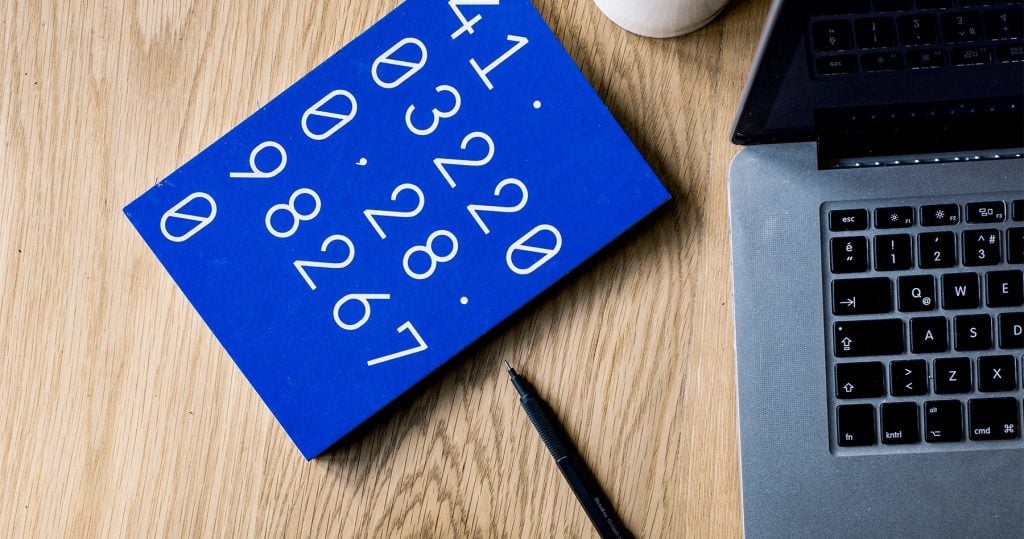
Step #3: Convert the Dose into Drops (Optional)
To make dosing easier, you can convert your dose into drops next. The number of drops you need to hit the dose will depend on how potent it is.
Knowing the drop dosage is useful when working with high potency CBD oils. It’s also useful if you’re using CBD oil for pets or with children where even slight changes in the dose can make a big difference.
Most droppers dispense 30 drops for every mL of oil — so you can find the dose per drop by dividing the dose per mL by 30.
Here’s the formula:
[CBD POTENCY PER ML] ÷ [30 DROPS] = [MG/DROP]
Using our example from above, which was a 600 mg CBD oil in a 1 ounce (30 mL bottle). The potency of this oil was 20 mg per mL, so we can calculate the CBD dose per drop by dividing this number by 30 (30 drops in 1 mL):
[20 MG PER ML] ÷ [30 DROPS] = 0.7 MG CBD PER DROP
Common CBD Oil Doses By Drop (Assuming the Dropper Provides 30 Drops per mL):
| Bottle Size | 300 mg CBD Oil | 600 mg CBD Oil | 1000 mg CBD Oil | 1500 mg CBD Oil |
| 15 mL | 0.7 mg/drop | 1.3 mg/drop | 2.2 mg/drop | 3.3 mg/drop |
| 30 mL | 0.3 mg/drop | 0.7 mg/drop | 1.1 mg/drop | 1.7 mg/drop |
| 50 mL | 0.2 mg/drop | 0.3 mg/drop | 0.6 mg/drop | 0.8 mg/drop |
How to Find the Number of Drops of CBD Oil You Need Based On Your Target Dose:
You can use all this information to find the number of drops needed to reach the target dose.
All you have to do to find the exact number of drops needed to get your dose of CBD is divide the total dose by the potency per drop of CBD oil:
[TARGET DOSE OF CBD (Ex: 51 mg)] ÷ [POTENCY OF CBD OIL PER DROP (Ex: 0.7 mg)] = DOSE OF CBD OIL IN DROPS
Using our example from before, the calculation would look like this:
[51 mg] ÷ [0.7 MG/DROP] = 73 Drops of CBD Oil
Quick Reference Chart For Finding The Number of Drops Per Dose For Common CBD Oil Potencies
| Dose | 300 mg | 600 mg | 1000 mg | 2500 mg |
| 5 mg | 15 Drops | 7.5 Drops | 4 Drops | 2 Drops |
| 10 mg | 30 Drops | 15 Drops | 9 Drops | 4 Drops |
| 15 mg | 45 Drops | 22 Drops | 13 Drops | 5 Drops |
| 20 mg | 60 Drops | 30 Drops | 18 Drops | 7 Drops |
| 25 mg | 75 Drops | 37 Drops | 22 Drops | 9 Drops |
| 30 mg | 90 Drops | 45 Drops | 27 Drops | 11 Drops |
| 35 mg | 105 Drops | 52 Drops | 31 Drops | 13 Drops |
| 40 mg | 120 Drops | 60 Drops | 36 Drops | 14 Drops |
| 45 mg | 135 Drops | 67 Drops | 40 Drops | 16 Drops |
| 50 mg | 150 Drops | 75 Drops | 45 Drops | 18 Drops |
| 55 mg | 165 Drops | 82 Drops | 49 Drops | 20 Drops |
| 60 mg | 180 Drops | 90 Drops | 54 Drops | 22 Drops |
| 65 mg | 195 Drops | 97 Drops | 58 Drops | 23 Drops |
| 70 mg | 210 Drops | 105 Drops | 63 Drops | 25 Drops |
| 75 mg | 225 Drops | 112 Drops | 67 Drops | 27 Drops |
| 80 mg | 240 Drops | 120 Drops | 72 Drops | 29 Drops |
| 85 mg | 255 Drops | 127 Drops | 76 Drops | 31 Drops |
| 90 mg | 270 Drops | 135 Drops | 81 Drops | 32 Drops |
| 95 mg | 285 Drops | 142 Drops | 85 Drops | 34 Drops |
| 100 mg | 300 Drops | 150 Drops | 90 Drops | 36 Drops |
Step #4: Tweak The Dose To Match Your Body
The steps listed above will help you find the ideal target dose in pure CBD and how much CBD oil you need to take to reach that dose.
The next step is to start taking this dose and slightly tweak the amount every day until you find what works best for you.
This is one of the most important steps.
As mentioned earlier, everyone responds to CBD oil differently. This means that you need to assess how it affects you individually, rather than going off the experiences of everyone else.
Your friend may find the right dose at 20 mg, while you may require far more or far less.
The only way to really identify this is to start with the dose calculated above, and then tweak it from there.
Perhaps you took 20 mg and didn’t find any relief in your symptoms — the logical step is to increase it to the next strength tier and reassess again.
In our example, we went with the medium strength — for the next dose, calculate the higher strength (6 mg per 10 pounds) instead;
[170] x [0.6 mg] = 102 mg CBD
Or perhaps you took the 20 mg and found excellent relief, but became a little too drowsy as a result, now it’s time to tweak the dose to a slightly lower amount.
This process is never finished — you’ll always be reassessing how it affects you and changing the dose slightly to accommodate.
Every time you try a new brand of CBD, the dose can change due to factors such as:
- The ratio of cannabinoids in the oil
- The ratio of terpenes in the oil
- Whether the oil is a full-spectrum oil or a CBD isolate
- The overall potency of the oil
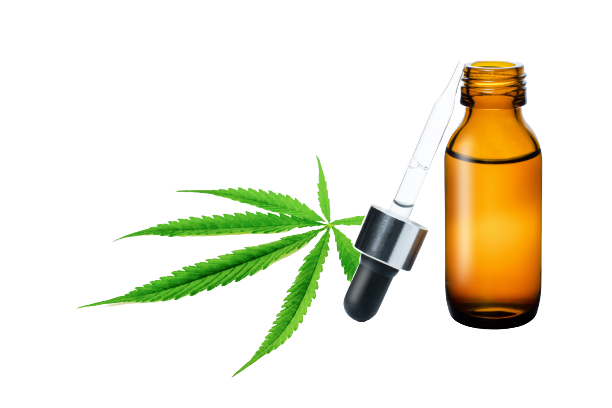
Pro Tip: Match the Potency of the Oil With Your Estimated Target Dose
CBD oils come in a wide range of potencies. It helps to match the potency of the oil with the most likely dose you’re going to be using.
For example, you wouldn’t want to use an ultra-high potency CBD oil if you planned on using a low dose of just 5 mg per dose. Each drop of oil may contain more than your desired dose, making it easy to take too much.
Likewise, if your goal is to use a high-strength of CBD, buying a low-potency CBD oil (300 mg or less) doesn’t make much sense because you’ll end up having to use a quarter of the bottle for every dose.
Here are some general recommendations for what potency CBD oil to use based on your target dose:
- 5 mg CBD dose — 250 mg CBD oil or lower
- 10 mg CBD dose — 250 mg CBD oil or lower
- 15 mg CBD dose — 250 – 500 mg CBD oil
- 20 mg CBD dose — 250 – 500 mg CBD oil
- 25 mg CBD dose — 500 – 1000 mg CBD oil
- 30 mg CBD dose — 500 – 1000 mg CBD oil
- 35 mg CBD dose — 500 – 1000 mg CBD oil
- 40 mg CBD dose — 500 – 1000 mg CBD oil
- 45 mg CBD dose — 500 – 1000 mg CBD oil
- 50 mg CBD dose — 1000 mg CBD oil or higher
- 55 mg CBD dose — 1000 mg CBD oil or higher
- 60 mg CBD dose or more — 1000 mg CBD oil or higher
Top-Rated Best CBD Oils for 2022
| Number | Product | Total CBD | Potency | Cost per mg CBD | Link |
|---|---|---|---|---|---|
|
1 |

Royal CBD Oil |
250 – 1000 mg |
8.3 – 33.3 mg/mL |
$0.15 – $0.26 |
|
|
2 |

Gold Bee CBD Oil |
1200 mg |
40 mg/mL |
$0.12 |
|
|
3 |
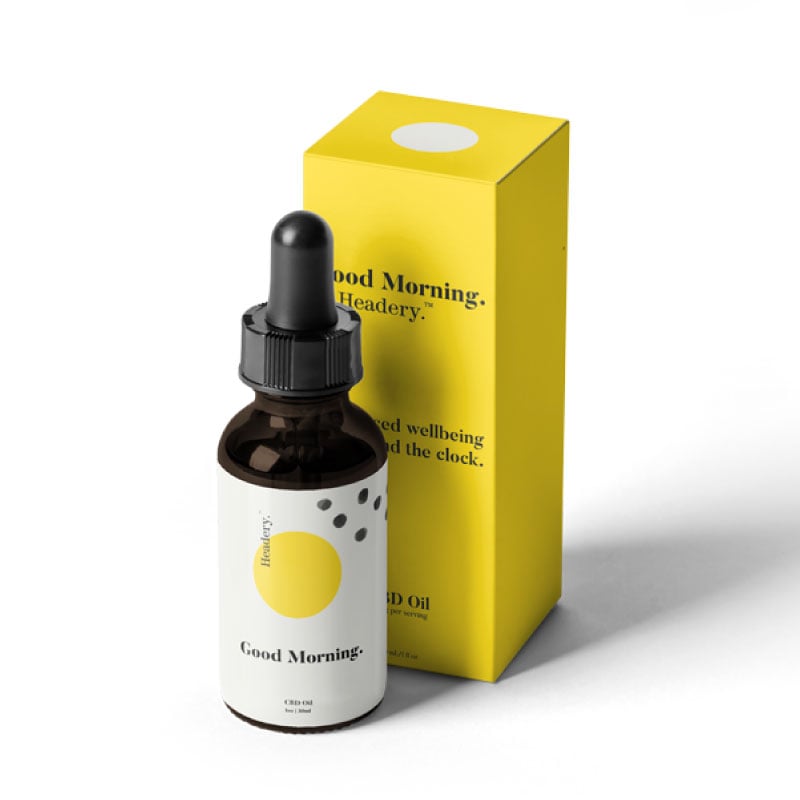
Good Morning. By Headery |
900 mg |
30 mg/mL |
$0.08 |
|
|
4 |

Hemp Bombs CBD Oil |
300 – 4000 mg |
10 – 133.3 mg/mL |
$0.07 – $0.17 |
|
|
5 |

Social CBD Drops |
1000 mg |
33.33 mg/mL |
$0.07 |
|
|
6 |

CBDistillery CBD Isolate Tinctures |
250 – 5000 mg |
8.3 – 166.66 mg |
$0.11 – $0.04 |
|
|
7 |

Kat’s Naturals Relax THC-Free Sublingual CBD Oil |
50 – 300 mg |
10 mg/mL |
$0.20 – $0.40 |
Key Takeaways: How Much CBD Should I Use?
CBD affects everybody differently, so it’s best to start with a low dose when using CBD for the first time and increase gradually every day.
Use the CBD dosage calculator listed at the top of this page to find recommendations based on your weight and desired strength of effects.
The most common dosage range for CBD products is 20 – 40 mg per dose. Some people take one dose per day, others take two or even three doses in a single day.
The potency of the CBD oil, capsules, or other CBD products you’re using is very important. You’ll need a much smaller dose of high-potency CBD oil compared to low-potency CBD oil.
If you haven’t found a CBD oil to use, I recommend checking out our list of the best CBD oils, best CBD capsules, or best CBD gummies to get started.

